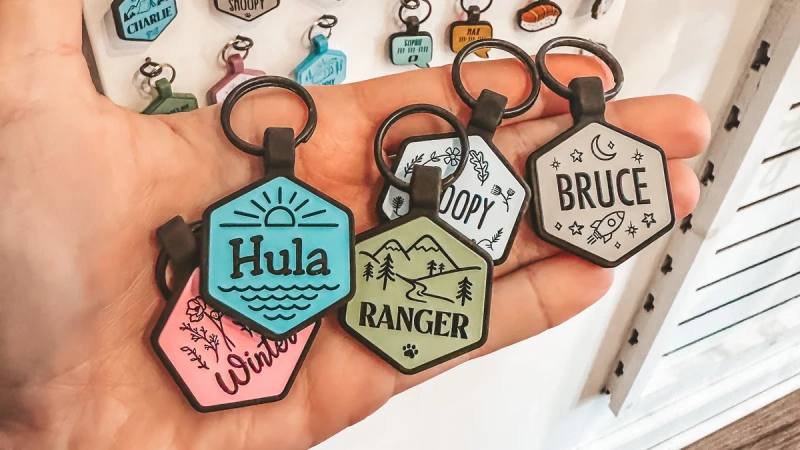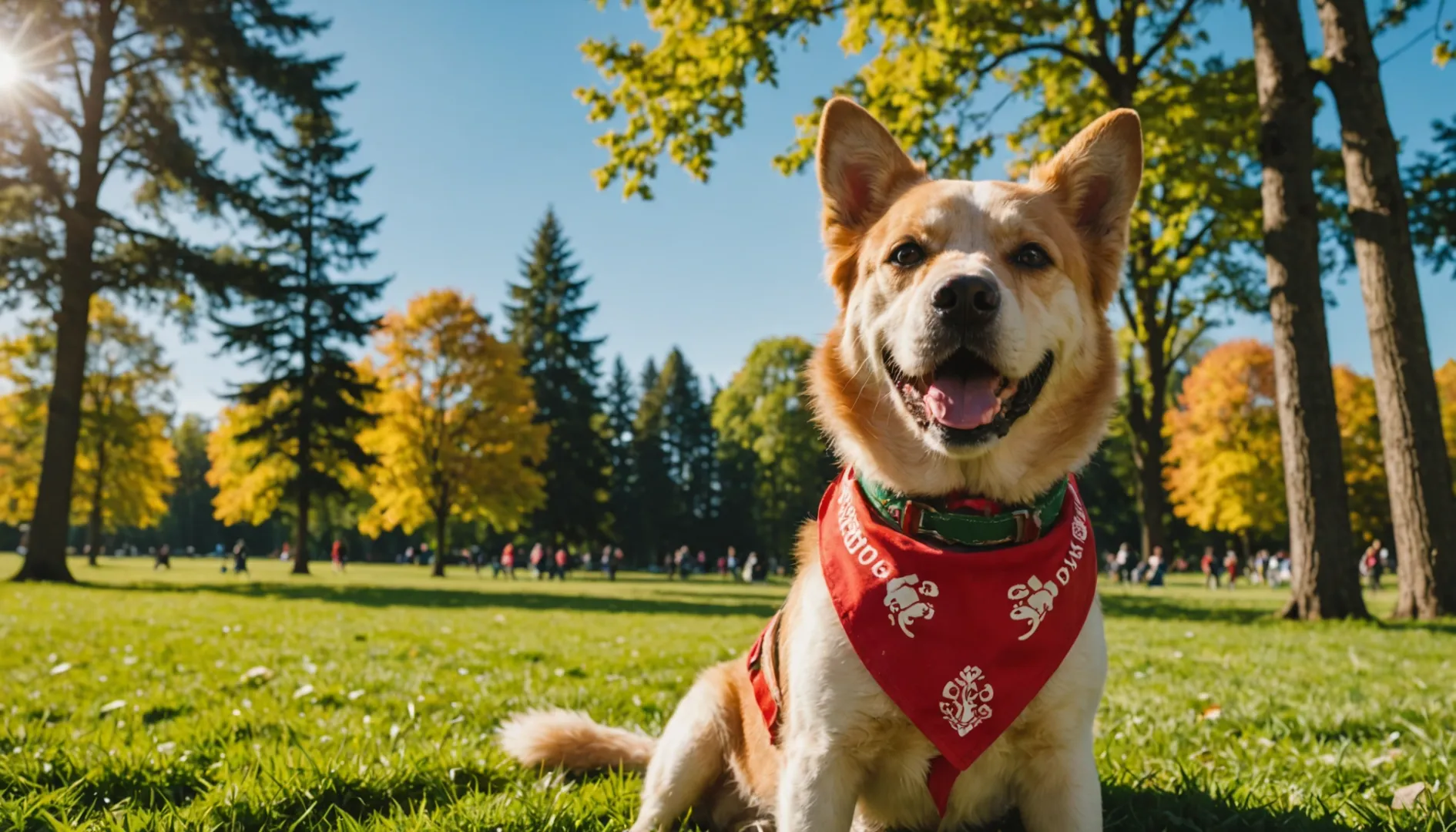
Recently, I noticed my neighbor’s dog wearing a cute little bandana. This sight led me to wonder꞉ are these fashionable items safe for our pets?
Wearing a dog bandana is generally safe when proper precautions are taken. Ensuring the right size, material, and supervision can help prevent discomfort or hazards. Always monitor your dog’s reaction to wearing a bandana and address any signs of irritation or distress immediately.
While the basics of bandana safety seem straightforward, understanding the detailed nuances can help you make the best decision for your pet. Delve deeper into this guide to discover more about the benefits, potential risks, and best practices for choosing and using dog bandanas effectively.
Dog bandanas can indicate a dog's temperament.True
Bandanas can signal if a dog is friendly or in training.
All bandana materials are safe for dogs.False
Some fabrics can irritate skin or cause allergies in dogs.
What Are the Different Purposes of Dog Bandanas?
Ever wondered why dog bandanas are so popular? It’s not just about looking cute; these colorful squares offer plenty of surprising benefits.
Dog bandanas aren’t just for show—they help with protection, visibility, and communication. Consider your dog’s size, activity, and allergies when choosing one. With thoughtful selection, bandanas can be a charming and functional addition to your pet’s look.
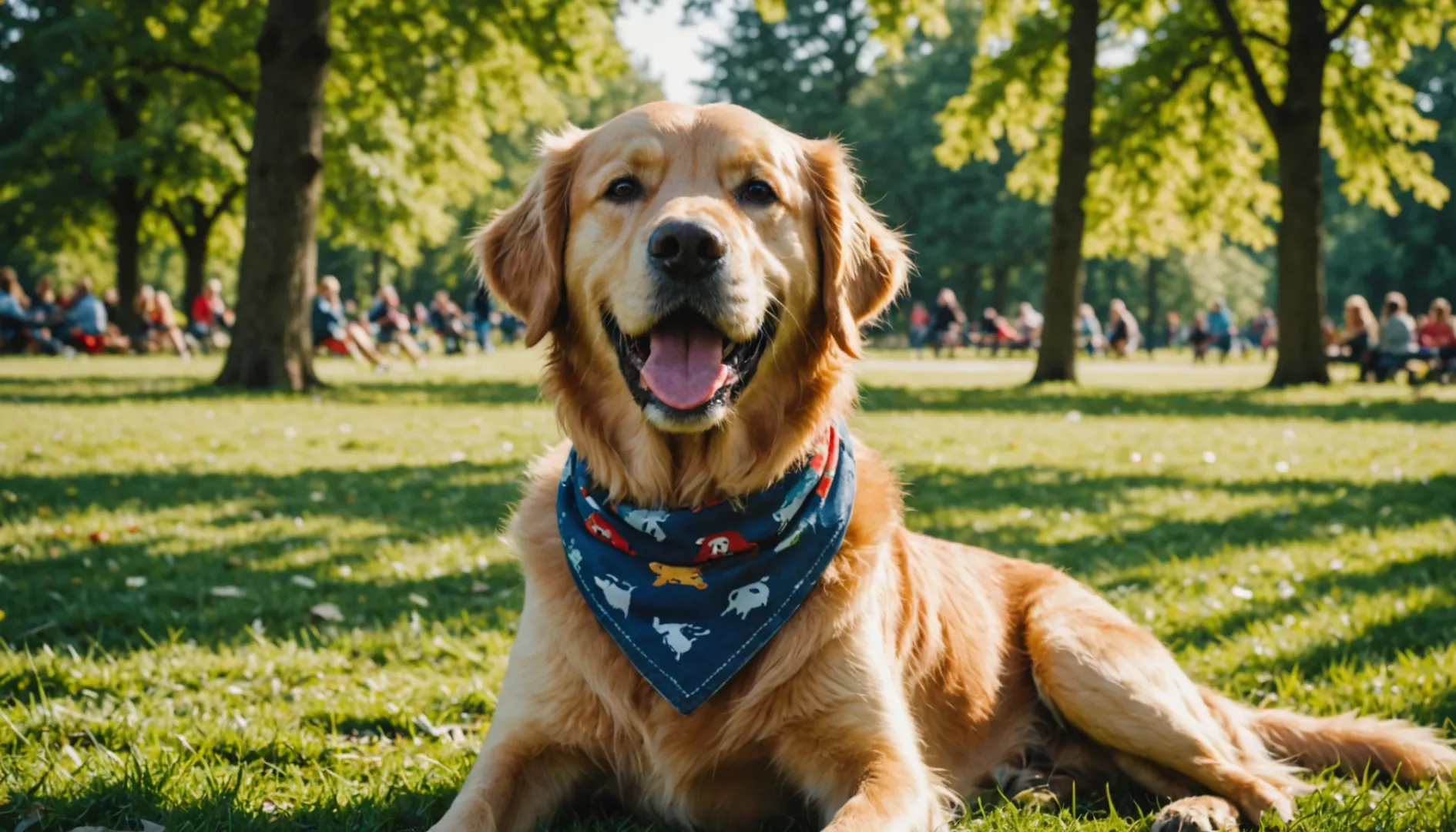
Fashion and Style
I remember the first time I put a bandana on my pup; it felt like an instant fashion upgrade! Dog bandanas serve as a fashion statement1, reflecting not just the pet’s personality but also the owner’s flair. Some days, I’d even match my outfit with my dog’s bandana, turning our walks into a mini runway show. It added a fun twist to our outings and often sparked conversations with other dog lovers at the park.
Identification and Communication
Beyond style, these bandanas can be real lifesavers in social settings. When my dog was still learning the ropes of social etiquette, a red bandana was my go-to signal for "please give us space." It was an easy way to communicate with other owners without having to explain my dog’s quirks every time we met someone new. These color-coded signals2 make public interactions smoother and safer for everyone involved.
Protection and Comfort
Living in an area with unpredictable weather taught me to use bandanas as more than just fashion accessories. On particularly hot days, I would soak a lightweight bandana in cold water before tying it around my dog’s neck. It was like a portable air conditioner! Conversely, during chilly months, a thicker bandana provided that extra warmth and comfort, proving their functional use3 extends beyond aesthetics.
Safety Enhancement
Safety is another key reason I love dog bandanas. Reflective or bright ones increase visibility during our evening walks. It eases my mind knowing that my dog is more visible to drivers when we’re out in low-light conditions. In busy neighborhoods with lots of traffic, this enhanced visibility4 can make all the difference.
Training Aids
Interestingly, bandanas have found a spot in our training toolkit. I started using different colors to signal different commands, almost like visual cues for my dog. It’s been incredibly effective! This method isn’t just fun; it adds another layer to our communication, making training sessions more engaging for both of us. Using bandanas for training purposes5 has truly expanded how we interact.
Dog bandanas can indicate a dog's temperament.True
Bandanas can signal if a dog is friendly or in training.
All dogs are allergic to bandana fabrics.False
Not all dogs have allergies; check for specific sensitivities.
How do I Choose the Right Bandana Size and Material?
Ever felt like a bandana could be the ultimate accessory for both you and your pup? Let’s dive into choosing the right one!
To pick the perfect bandana, measure the neck or intended area, leaving room to tie comfortably. Opt for breathable fabrics like cotton to ensure comfort and avoid irritation.
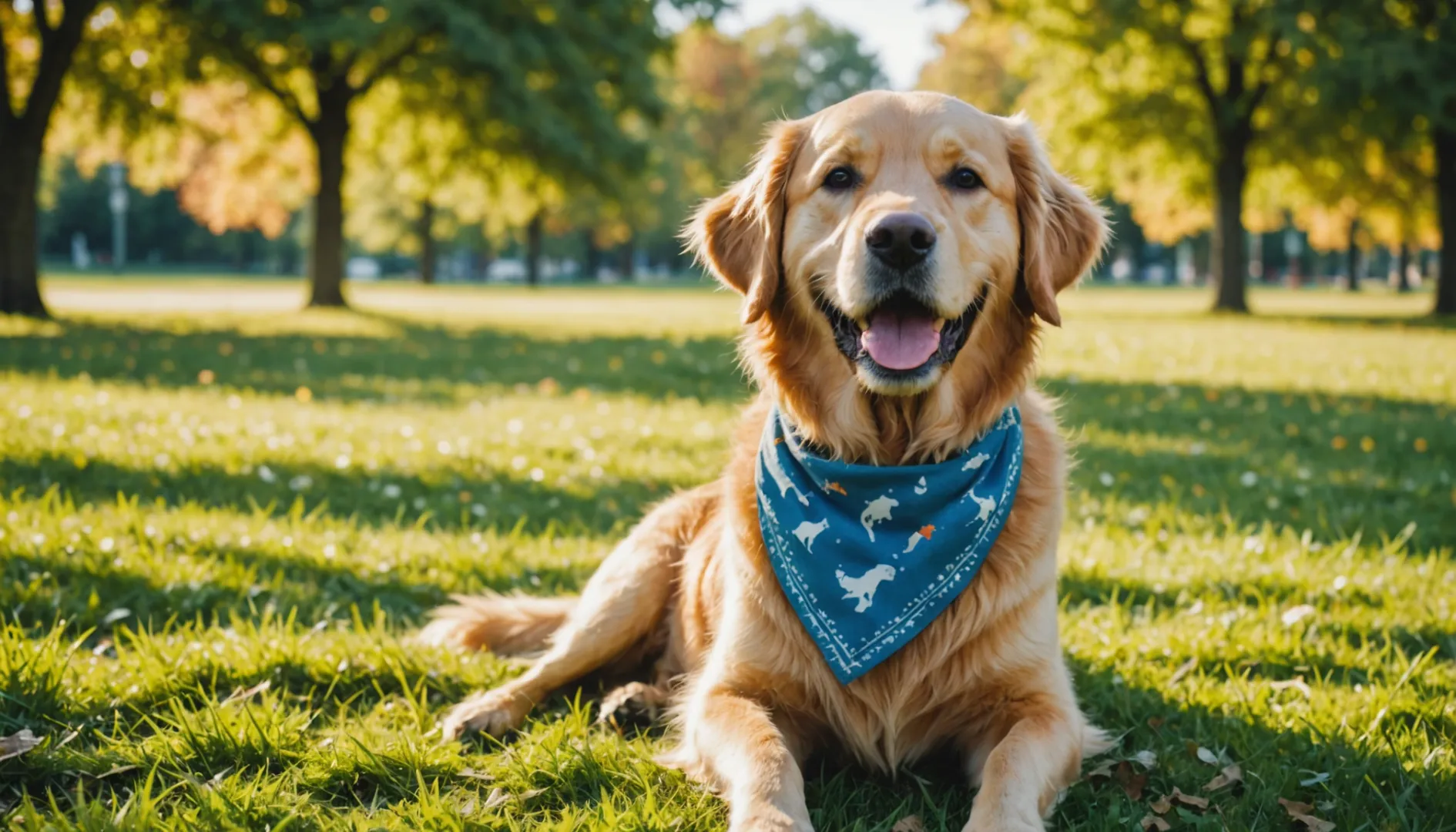
Measuring for the Perfect Fit
I remember the first time I tried tying a bandana around my dog’s neck—it felt like I was wrestling with a wiggly, furry Houdini! Turns out, measuring correctly makes all the difference. Start by wrapping a soft tape measure around your neck (or your pet’s neck) where the bandana will sit. For pets, add a couple of inches so it doesn’t feel like they’re wearing a necktie. If you’re planning to wear it yourself, think about whether it’ll wrap around your wrist or head, and adjust accordingly.
Choosing the Right Material
I’ve always found that when it comes to comfort, nothing beats cotton. It’s lightweight and breathable, making it a go-to for warm weather. But if you’re someone who breaks into a sweat just thinking about moving (like me during summer hikes), you might want to check out moisture-wicking fabrics like polyester blends or microfiber. For anyone with sensitive skin or allergies, hypoallergenic materials or organic options like bamboo can be a game-changer.
Considering Style and Functionality
Let’s face it—bandanas are fashion statements. I love picking out different colors and patterns that match the mood of the day or season. Bright colors can be lifesavers for evening strolls or outdoor adventures, where visibility is key. And if you’re like me and enjoy making sure your dog looks as stylish as you, consider using bandanas as identifiers. A simple red bandana can say "in training," while green can shout "approachable!"
Don’t forget to consider reflective elements6 if you or your pet venture out in low-light conditions. And if you’re feeling bold, why not explore some fashion statement7 prints?
Maintenance and Care Tips
After a few too many mishaps with shrinking my favorite cotton bandanas, I’ve learned that caring for them properly is key. Most are machine washable, but for those delicate ones, hand washing is best to keep them looking fresh and vibrant. I also rotate through a few favorites to minimize wear and tear—plus, it keeps my look versatile without sacrificing comfort or style.
Dog bandanas can help protect against sunburn.True
Bandanas can shield a dog's neck from UV rays, preventing sunburn.
All dogs are comfortable wearing bandanas.False
Some dogs may find bandanas uncomfortable due to fit or material.
What Safety Precautions Should You Take When Using Bandanas?
Bandanas may seem like a simple accessory, but using them safely can be surprisingly nuanced. Let’s unravel how to wear them without a hitch.
When wearing bandanas, ensure they fit well, are made from safe materials, are used under supervision, and consider social meanings and potential allergies.
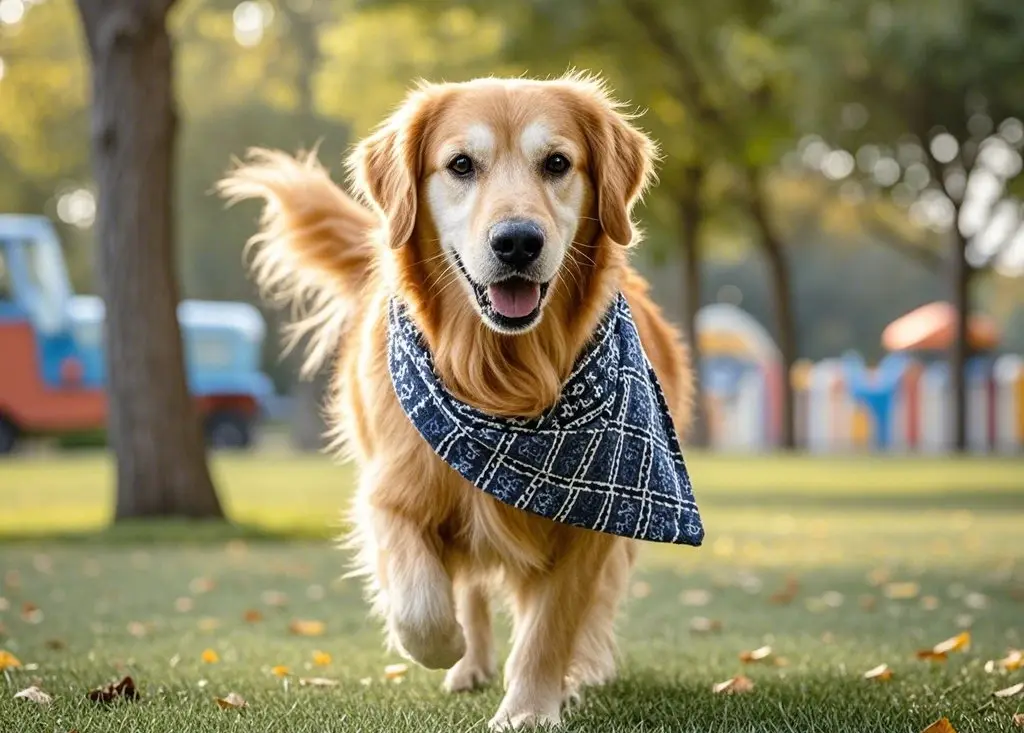
Choosing the Right Size and Fit
I remember the first time I wore a bandana—it was at a summer festival, and I picked one because it seemed like the perfect way to keep cool and stylish. But, boy, did I learn about size the hard way! It kept slipping off every ten minutes, and by the end of the day, it was more of a hassle than a help. Now, I’ve learned that finding the right fit is everything. A bandana should be snug enough to stay in place but loose enough to let you slip two fingers between it and your skin easily. This little trick has saved me from countless wardrobe malfunctions and keeps me comfy all day long.
Material Matters
Choosing the right material for a bandana is as crucial as picking the right fit. On one memorable road trip, I wore a synthetic bandana only to end up with an itchy rash—lesson learned! Nowadays, I stick to breathable fabrics like cotton or bamboo, which are gentle on the skin and perfect for all-day wear. They don’t just feel good; they keep me cool and irritation-free even when the sun is blazing. Plus, they’re easy to wash without worrying about shrinking or losing their shape.
Supervision is Key
I can’t count the number of times my dog has almost turned his bandana into a chew toy during playtime. Whether it’s for him or me, I’ve realized that keeping an eye out while wearing a bandana is key. For us humans, it’s about being mindful of situations where a bandana might snag or become a safety concern8. Whether I’m hiking or just running errands, being aware of my surroundings helps me avoid mishaps.
Understanding Social Implications
Growing up in a diverse neighborhood, I quickly learned that colors have meanings beyond the aesthetic. My first red bandana—picked purely for its vibrant hue—caused quite the stir at a local event. That’s when I understood the importance of knowing the cultural and social connotations behind bandana colors. Now, before I choose a bandana color, I make sure to research local norms to ensure I’m not inadvertently sending any unintended messages. It’s a small step that can prevent big misunderstandings.
Allergy and Sensitivity Awareness
Before wearing any new bandana, especially those with bright dyes, I always do a quick allergy test. Just like that one time when my neck turned red after wearing a newly bought bandana for an hour—ouch! Testing a small patch against my skin beforehand helps me avoid allergic reactions. If I notice any itching or redness, off it goes immediately, and I switch to hypoallergenic options instead. It’s all about keeping comfort in check while enjoying this versatile accessory.
Dog bandanas can signal a dog's temperament.True
Bandanas can indicate if a dog is friendly or needs space.
All dogs can safely wear any bandana material.False
Some dogs may have allergies to certain fabrics or dyes.
Can Bandanas Be Used as Training Tools for Dogs?
Who knew a simple bandana could be a game-changer in dog training?
Yes, bandanas can serve as effective training tools for dogs by signaling specific behaviors, enhancing communication, and increasing visibility. They help convey important messages about a dog’s temperament or training status to others, aiding in smoother interactions.
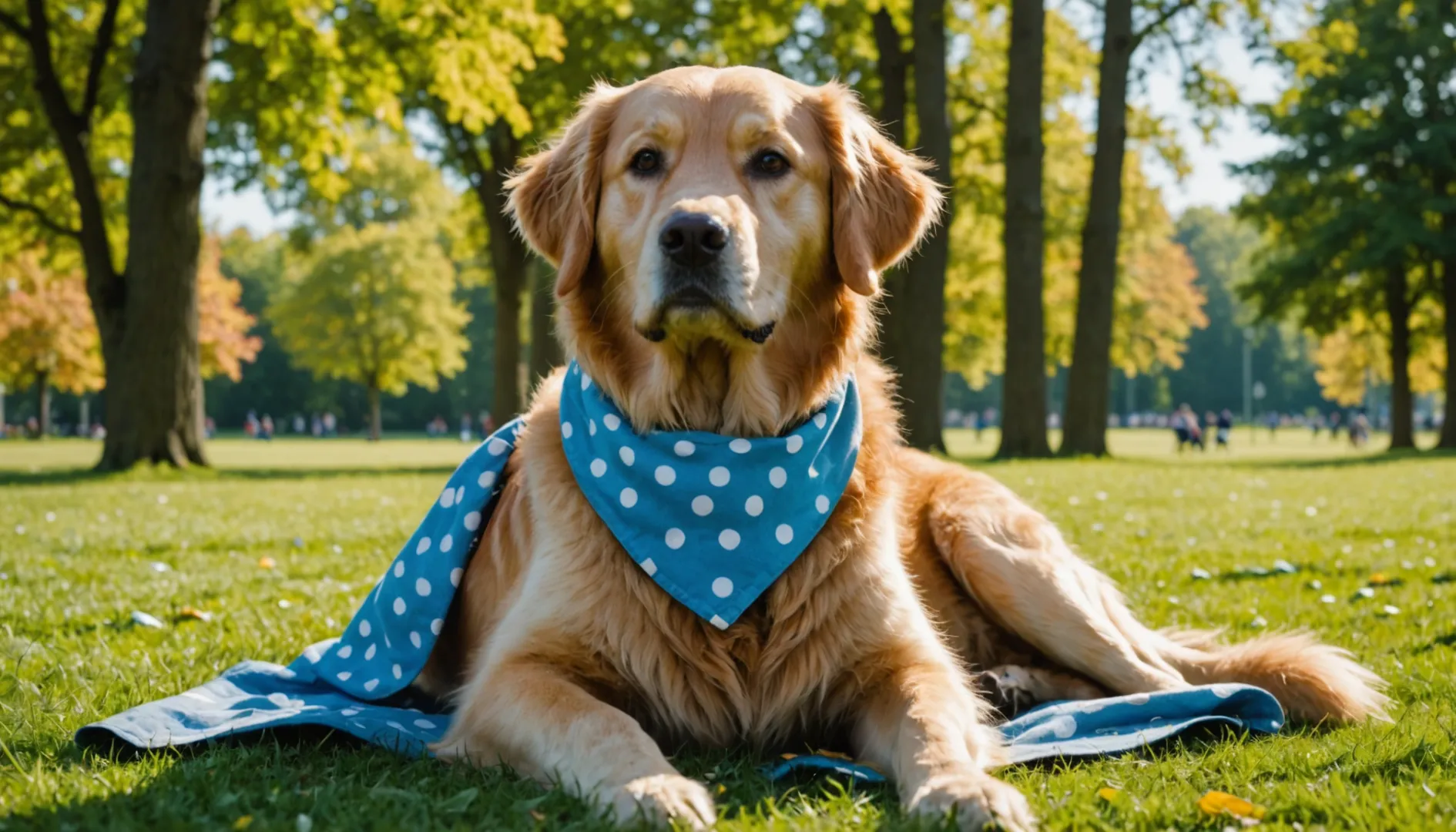
Enhancing Communication with Bandanas
I remember the first time I used a bandana to help train my dog, Luna. It wasn’t just about looking cute; it was a breakthrough in how we communicated. I chose a bright red bandana to signal when she was working on new commands. To my surprise, it wasn’t just me who benefited from this color-coded system9—people at the park instantly understood that Luna needed some space. By using different colors, like yellow for her nervous days, I could easily convey her temperament to others, making our training sessions much less stressful.
Pairing bandanas with commands became our secret weapon. Luna quickly learned to associate her red bandana with focus and listening, while the green one meant it was okay to play. This multi-sensory approach made it easier for her to grasp training cues, especially when distractions loomed large.
Using Bandanas for Identification
In our weekly group classes at the park, keeping track of Luna amidst a sea of Labradors and Beagles could be challenging. But with her unique blue bandana, spotting her became a breeze. It wasn’t just helpful for me; other trainers appreciated the quick identification too. Her bandana also boldly declared "In Training," which discouraged well-meaning but distracting pats from passersby, allowing Luna to focus on the task at hand.
Safety and Practicality Considerations
One of my top priorities was ensuring Luna’s safety while she sported her bandanas. The fit had to be just right—not too tight to cause discomfort, but snug enough to stay put during her zoomies. Lightweight materials were a must, as they kept her cool and comfortable during our more active training sessions.
Supervising Luna while she wore her bandana was crucial. I was always mindful of potential hazards like tangling or choking. Regular checks ensured that her bandana remained secure yet non-restrictive. Proper supervision10 is key to using bandanas effectively and safely during training sessions.
Sometimes, I’d even add a calming lavender scent to her bandana—a little trick to help ease her anxiety during particularly challenging lessons. It was like giving her an extra layer of support without any cumbersome equipment. And honestly, anything that helps us bond and communicate better is worth trying.
Dog bandanas can indicate a dog's training status.True
Bandanas can signal to others that a dog is in training, aiding communication.
All dogs are comfortable wearing bandanas.False
Not all dogs tolerate bandanas; some may find them irritating or restrictive.
Conclusion
Wearing a dog bandana is generally safe and beneficial, provided the right size, material, and supervision are ensured to prevent discomfort or hazards for your pet.
-
Explore creative ways to style your dog with trendy bandanas. ↩
-
Discover what different colors signify for dog interactions. ↩
-
Learn how bandanas can protect dogs from weather extremes. ↩
-
Find out how reflective bandanas improve dog safety. ↩
-
Understand how bandanas can assist in effective dog training. ↩
-
Learn how reflective clothing enhances safety during low-light activities. ↩
-
Discover the latest trends in bandana fashion for a stylish update. ↩
-
Discover how to safely wear bandanas during various activities. ↩
-
Learn how colors can communicate your dog’s training needs. ↩
-
Ensure your dog’s safety while using bandanas. ↩


